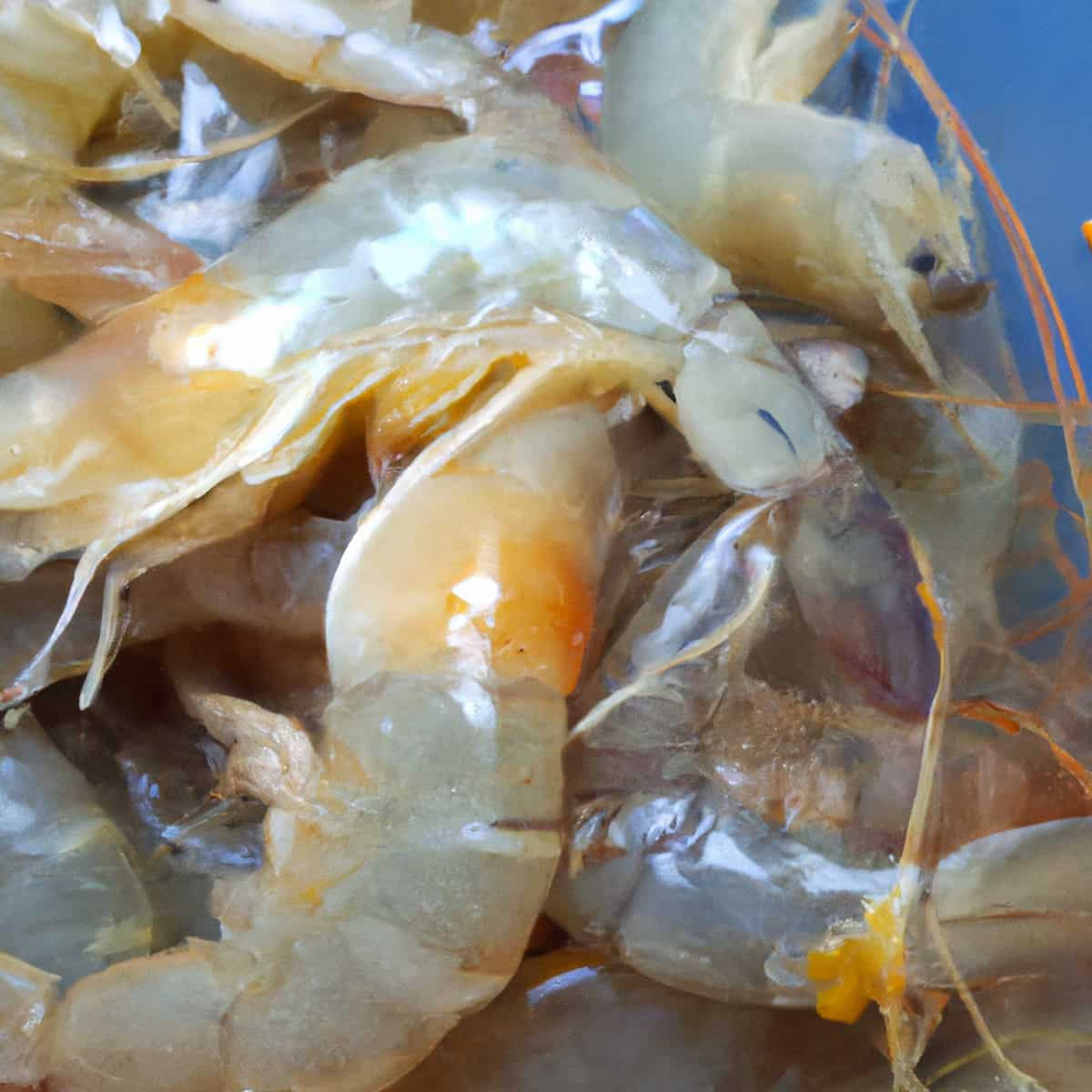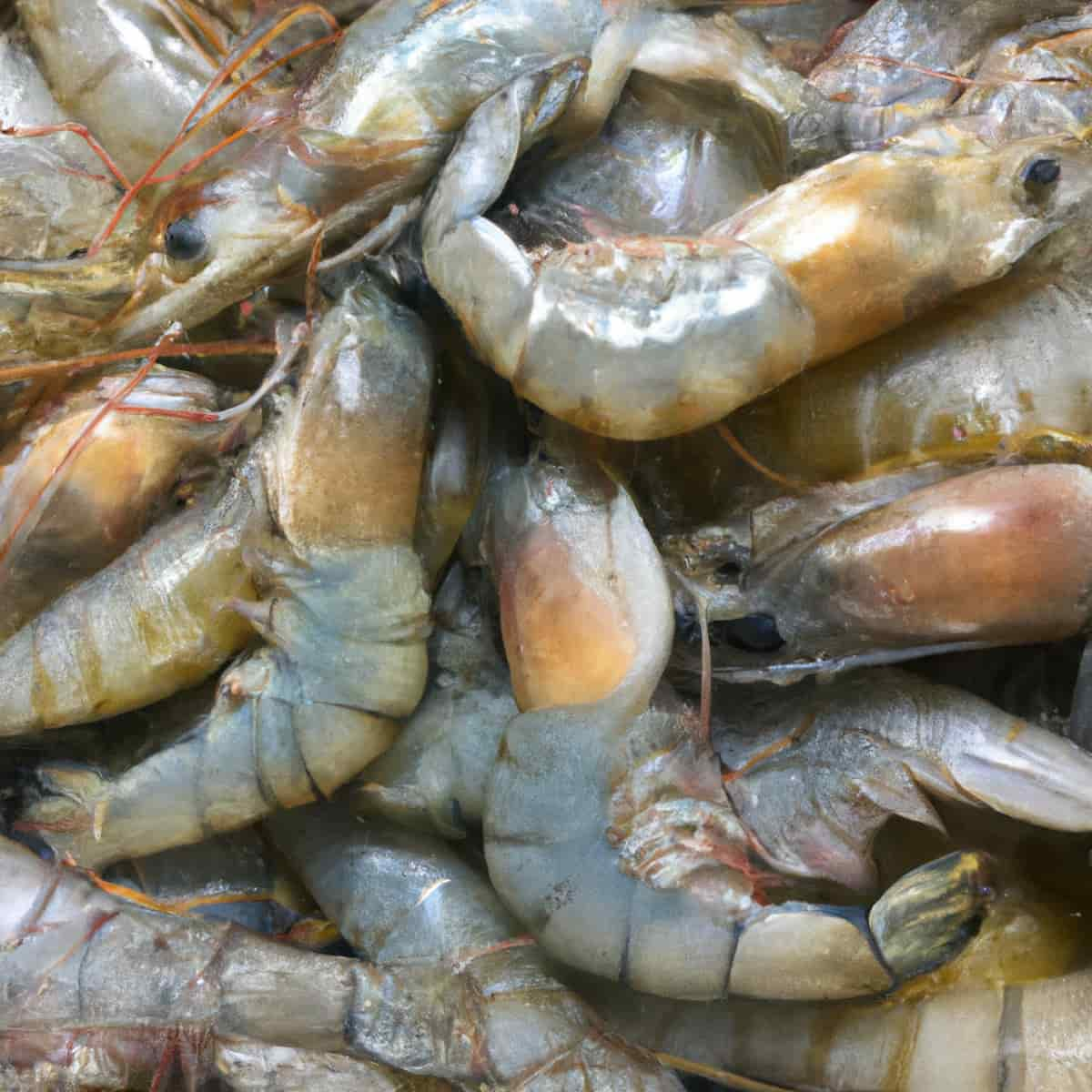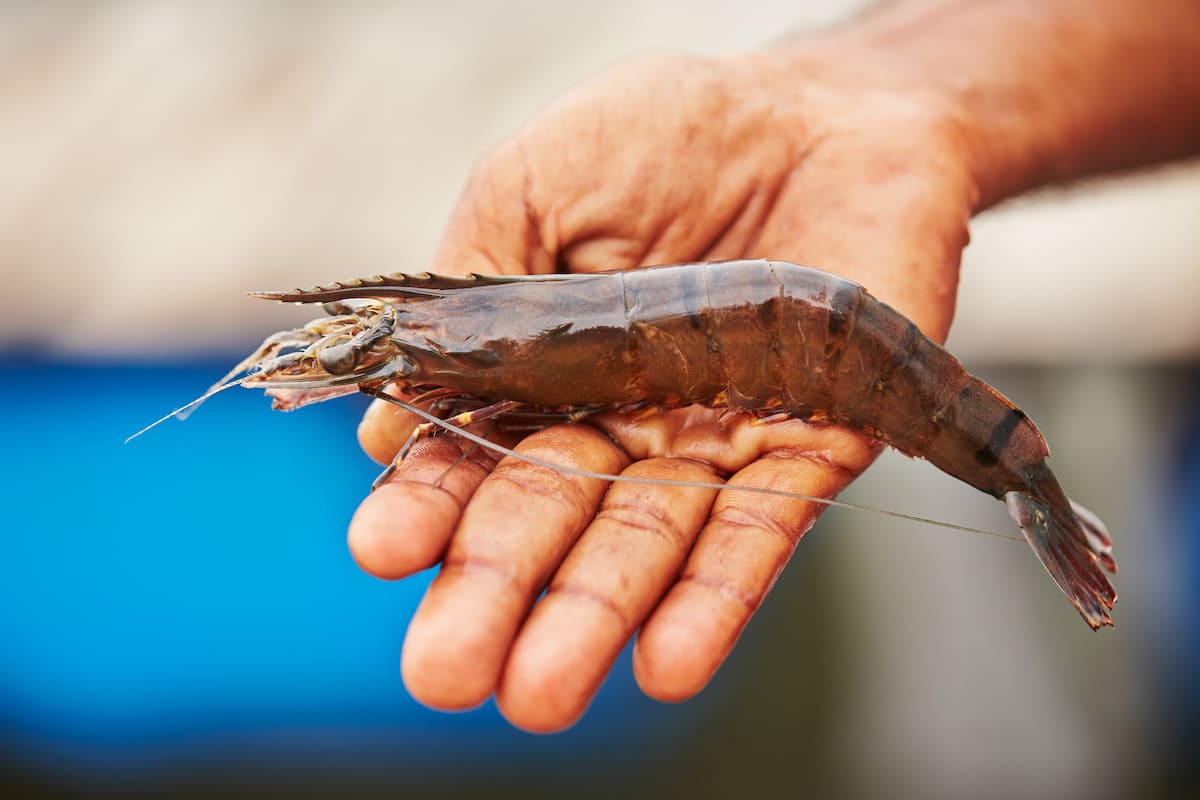Yellow-head disease (YHD) is a highly contagious viral infection that affects Penaeus monodon and Penaeus vannamei shrimp, among other farmed shrimp species. Yellow head virus (YHV), in the family Roniviridae, is what makes sick. The YHV genome is about 25 kb long and has a single strand of positive-sense RNA.

The high death rates and economic effects of YHD have become major worries for the shrimp farming industry. The disease causes the cephalothorax and hepatopancreas to turn yellow. It then causes lethargy, loss of appetite, and eventually death. In affected ponds, more than 80% of the fish can die, which costs farmers a lot of money.
Yellow-Head Disease Management in Shrimp (Prawn)
The Pathogen Responsible for Shrimp Yellow-Head Disease (YHD)
The virus responsible for yellowhead disease is a member of the family Coronaviridae, genus Okavirus, and order Nidovirales. The virus is a cytoplasmic, enveloped, positive-sense, rod-shaped, single-stranded RNA (ssRNA). Shrimp farms in Southeast Asia that cultivate P. monodon in ponds are the primary sources of the Yellow Head Virus (YHV). In conclusion, YHD is a viral disease that primarily affects P. monodon in Southeast Asian shrimp farms.
Spread and Transmission of Shrimp Yellow-Head Disease (YHD)
- Yellow Head Disease (YHD) was discovered in Thailand in 1990 and quickly spread throughout Asia and North America.
- The virus is thought to spread by contact with other infected shrimp or through water polluted with the virus.
- The disease causes infected shrimp heads to become yellow, and the shrimp finally die.
- Yellow Head Virus (YHV) has been found in various aquatic and terrestrial invertebrates and has been linked to significant death rates in shrimp and crabs.
- Cannibalization of infected animals, exposure to polluted water or soil, feeding on infected prey, and viral particles are all ways for the virus to spread.
- Yellow head virus vectors include diseased shrimp, corpses, and tiny chunks of meat from dead shrimp.
In case you missed it: Ergot or Sugary Management in Sorghum: Disease Symptoms, Treatment, Chemical, Biological, Natural, and Organic Control

What are the Signs and Symptoms of Yellow-Head Disease (YHD) in Shrimp
- Yellowhead sickness in shrimp causes symptoms such as lethargy, lack of appetite, and yellow coloring around the head. Because of lesions, the hepatopancreas becomes yellow, and moribund shrimp congregate towards the pond’s margins.
- Infection with YHV occurs in the late postlarval phases, with illness and death occurring within 2 to 4 days.
- Moderate to high numbers of cytoplasmic inclusions in ectodermal and mesodermal tissues are indicators of YHV infection.
- Shrimp have pale bodies, enlarged cephalothorax, a light yellow to yellowish hepatopancreas and gills, and a substantial decrease in food consumption.
- Within 3-5 days of illness initiation, a high fatality rate can exceed 100% of afflicted people.
- Yellow head disease (YHD) is a viral infection that affects shrimp, causing a yellow head and death.
- The black tiger shrimp Penaeus monodon is a common species that can be infected by the yellowhead virus (YHV).
- YHD can significantly impact shrimp production, and management practices are necessary to reduce its occurrence.
Diagnosis of Yellow-Head Disease (YHD) in Shrimp
- Yellow head disease in shrimp is diagnosed by observing symptoms such as decreased food consumption and moribund shrimp drifting slowly along the pond dike.
- Furthermore, pale bodies, enlarged cephalothorax, yellowish hepatopancreas, and gills are signs of YHV infection. Basophilic, spherical, and cytoplasmic inclusions can also be seen in ectodermal and mesodermal tissues.
- Confirmatory diagnosis is accomplished by the use of electron microscopy or molecular lab tests such as RT-PCR or in situ hybridization studies.
- To minimize future spread and losses in commercial shrimp production, it is critical to identify and confirm the presence of YHV quickly.
Treatment, Prevention, and Control of Yellow-Head Disease (YHD) in Shrimp
- There is no specific treatment for this virus in shrimp.
- Good biosecurity measures can prevent losses, such as disinfectants, and separate infected from healthy animals.
- Some sources recommend avoiding yellowhead shrimp, while others claim they are safe if cooked properly.
- The most reliable way to prevent yellowhead disease (YHD) in shrimp is through avoidance.
- Prevention is the best way to manage Yellow-head Disease (YHD) in shrimp through careful selection, disinfection, and good nutrition.
- This can be done by carefully choosing the post-larvae, reducing or stopping horizontal transmission, including spreading carriers, disinfecting contaminated ponds or equipment with 30 ppm chlorine, giving shrimp clean water and the right food, and monitoring the water quality.
- These measures can significantly reduce the likelihood of YHD occurrence. However, once the disease is present, there is no specific treatment, making prevention and control all the more important.
In case you missed it: Abortion Management In Cattle: Disease Symptoms, Causes, Diagnosis, Treatment, Control, and Prevention

Conclusion
Yellow head disease (YHD) is a viral virus that infects shrimp and causes severe output losses. YHD symptoms include a yellow head and a slower development rate. Poor management procedures and infected post-larvae are two of the causes of YHD. Because there is no particular treatment for YHD, prevention, and management are crucial.
Adequate biosecurity, cleaning of contaminated equipment, and providing good water quality and nutrition are all measures to avoid YHD. The observation of clinical symptoms and laboratory studies diagnoses YHD. Control and prevention of YHD need early detection, suitable management measures, and the maintenance of disease-free stock. Overall, decreasing the impact of YHD on shrimp production is critical.
- Beneficial Insects in Pest Management
- Natural Solutions for Pest Control in Flower Gardens
- Types of Fungicides Used in Agriculture
- Common Issues in the Fruit Development Stage of Pomegranate Farming
- Fruit Development Issues in Papaya: Easy Solutions and Treatment
- Soil-Borne Diseases and How to Protect Your Plants
- Practices to Prevent Disease Spread in the Garden
- From Wilted to Thriving: How to Treat Root Rot Naturally in Houseplants
- Natural Remedies to Cure Brown Spots on Fig Tree Leaves